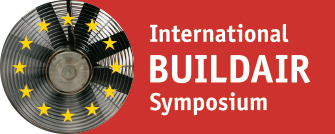Purpose of the work
In an air traffic control tower, conditions for thermal comfort are crucial as the task of air traffic control requires high level of attention and vigilance. Comfortable conditions must be guaranteed all the time especially during extreme periods. Therefore, the HVAC system of a control tower is always composed by two, possibly three, identical air handling units, functioning in full redundancy.
In this paper, we will present the case of a French control tower that shows many difficulties to maintain thermal comfort conditions despite the redundancy of air handling units. An assessment of ductwork and envelope performance was realized by the SNIA which is the main contractor for the retrofitting project of the building. This analysis enabled us to explain both the poor performance of the air handling system observed by facility managers at the building scale, as well as the local thermal discomfort mentioned by occupants.
Method of approach
The method is based on an experimental approach with both measurements (temperatures, pressure and airflow rate in the ductwork, building temperature and pressure), and observations (duct and envelope leakages search, airflow pattern) in order to understand the current building functioning and to identify the causes of the problem.
Content of the contribution
The design heating and cooling loads of the HVAC system are in accordance with current needs of the building. However, the diagnosis showed that the major problem is due to the leaking inducing a poor performance of supply and extract ductworks. The latter explains why the HVAC system failed to create comfortable conditions during extreme periods. Repair measures were proposed including the full insulation of the ductwork system and improvement of envelope airtightness. Those repairs will be shortly done.
Results and assessment of their significance
Investigations showed a poor performance of the air-supply ductwork. The whole building is depressurized due to airflow rate drop between supply and exhaust air. As a result, leakages through the building envelope creates drafts that causes local discomfort during the winter period. Also, air renewal of the building is significantly higher than the expected value. This results with dry air in winter despite the existence of a humidifier, and an increase of sensible and latent heating loads during summer.
Conclusions
It has been shown that leakages in ductwork combined with low insulation level of the supply ductwork and poor building airtightness can be responsible for a poor performance of HVAC system and local thermal discomfort. Only a comprehensive approach of ductwork and envelope airtighness can assure the proper functioning of HVAC systems and indoor comfort conditions.
Note
For more information, please contact the reference author at: fabrice.richieri@aviation-civile.gouv.fr





